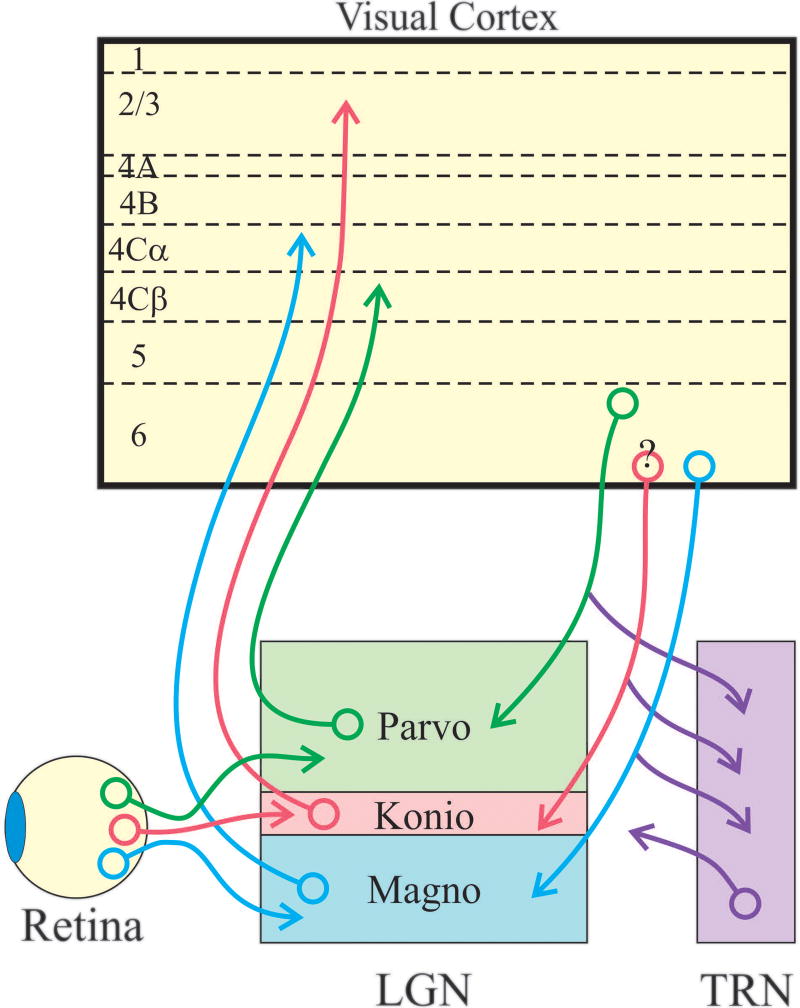Figure 3.
Organization of feedforward and feedback pathways in the primate. Three major parallel processing streams are established in the retina: the parvocellular, magnocellular, and koniocellular streams, indicated schematically with green, blue and red cell bodies and axons. Retinal ganglion cells belonging to these streams send axons to distinct layers of the lateral geniculate nucleus to synapse with relay neurons that selectively innervate cortical layers 4Cβ, 4Cα, and layers 2 and 3. Although not indicated, relay neurons also often provide sparse input to layers 1 and 6. Layer 6 corticogeniculate neurons are also organized into three major streams. Neurons in upper layer 6 selectively target the parvocellular layers of the lateral geniculate nucleus, while neurons in lower layer 6 target the magnocellular and koniocellular layers (note: although it is unclear in primates whether separate neurons in lower layer 6 target the magnocelluar and koniocellular layers, physiological results from monkeys and anatomical evidence from tree shrews suggests separate populations (Usrey & Fitzpatrick, 1996; Briggs & Usrey, 2009). In addition to making synapses with neurons in the lateral geniculate nucleus, corticogeniculate neurons also send axon collaterals into the thalamic reticular nucleus to synapse with GABAergic neurons that, in turn, project to the lateral geniculate nucleus.

